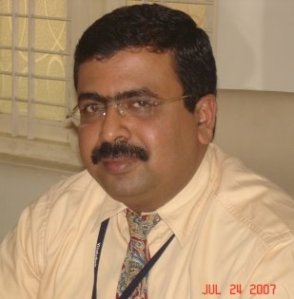Archive
iSuppli raises 2010 foundry forecast; interesting lessons to learn for India from China's story!
“During the first three quarters of 2010, foundries were under intense pressure to meet customer demand,” said Len Jelinek, director and chief analyst for semiconductor manufacturing at iSuppli. “The pressure is leading to increased revenue, as consumer spending has come back with a vengeance following a dramatic downturn in the fourth quarter of 2008 and for all of 2009.”
By 2014, total pure-play foundry revenue will reach $45.9 billion, managing a CAGR of 9.4 percent from $26.8 billion in 2008. Pure-play foundries are contract manufacturers whose business consists of producing semiconductors on behalf of other chip companies.
Enhancing foundry forecast
I started by asking Jelinek what were the chief reasons for enhancing the foundry forecast. Jelinek said: “The forecast increase is based on the anticipated strength in demand for products in Q2 and beyond. Additionally, it is also simple math. The foundry market had a good Q2, and last year, Q1 and Q2 were quite challenging. So, by having a good first half of the year, the percentage must increase.”
Also, given that there has been renewed demand for consumer electronics products, what are the specific CE products, besides netbooks, mobile phones, that have been seeing renewed demand, and why?
TSMC leads 2009 foundry rankings; GlobalFoundries top challenger!
Recently, IC Insights released the rankings for the world’s top pure-play and IDM foundries. No surprises, as TSMC continues to lead! The surprise entrant is of course GlobalFoundries, which ranked fourth, after having started operations in March 2009.
However, all of the foundries, barring Tower Semiconductor, registered negative growth during 2009. Tower, which acquired Jazz Semiconductor in 2008, was the only foundry to post positive growth during 2009.
IC Insights further stated that if the revenues of Chartered Semiconductors, which was purchased by GlobalFoundries recently, were combined with GlobalFoundries, their combined sales would have amounted to over $2.6 billion in 2009. That’s not very far from UMC, which is ranked no. 2!
Now, I am not an expert to comment on which foundry has done really well, despite the recession, or whether GlobalFoundries can really challenge and overtake TSMC in the future. However, I followed with great interest a discussion on one of my groups on LinkedIIn on this topic.
Daniel Nenni, a critically acclaimed blogger, and an industry colleague, had recently blogged on this subject. There were some interesting comments following that post. I sought the permission of Malcolm Penn, chairman and CEO, Future Horizons, to use some of his remarks for my blog post.
Penn said that there is a reason why TSMC is the no. 1 foundry in the world. However, as competition breeds innovation, hence, the foundry business will be much more interesting to watch with GlobalFoundries challenging TSMC.
He added: “There was also no reason why Intel is #1 in PC MPUs or Microsoft #1 in PC OS except for one key factor. Once a competitor gets to be a certain size, no amount of innovation will help swing the balance of power.” The real question therefore is: “Has TSMC now passed this tipping point?” I fear it already has.”
Fact of the matter is in the foundry business capacity is king and TSMC already outguns all of the other competitors combined. Given the minimum two to three year lead time to build and ramp new capacity, TSMC has incredibly clear visibility to see any competitive threat coming.
Very interesting! Some other observations later!


